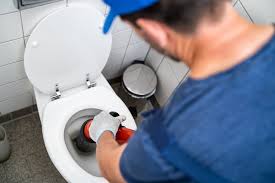A clogged toilet drain is one of the most common household plumbing issues. It can be frustrating, messy, and even embarrassing if not handled properly. Fortunately, with the right tools and techniques, you can often resolve the problem yourself without calling a plumber. In this guide, we’ll walk you through the steps to unclog a toilet drain effectively and safely.Understanding the Causes of a Clogged Toilet DrainBefore diving into solutions, it’s helpful to understand what causes a clogged toilet drain. Common culprits include:
- Excessive toilet paper: Using too much toilet paper can overwhelm the drain.
- Non-flushable items: Items like wipes, feminine hygiene products, or paper towels can block the pipes.
- Hard water deposits: Mineral buildup can narrow the pipes over time.
- Foreign objects: Small toys or other objects accidentally flushed can cause blockages.
Tools You’ll NeedTo tackle a clogged toilet drain, gather the following tools:
- Plunger (preferably a flange plunger)
- Toilet auger (also called a closet auger)
- Rubber gloves
- Bucket
- Hot water (optional)
- Dish soap (optional)
Step 1: Assess the SituationBefore taking action, check the water level in the bowl. If it’s nearly overflowing, avoid flushing again. Instead, remove some water with a bucket to prevent spills.Step 2: Use a PlungerThe plunger is your first line of defense. Follow these steps:
- Place the plunger over the drain hole, ensuring a tight seal.
- Push down gently, then pull up sharply to create suction.
- Repeat this motion 10-15 times.
- Flush the toilet to see if the clog clears.

If the water drains slowly, repeat the process. If it doesn’t work, move to the next step.Step 3: Try a Toilet AugerIf the plunger fails, a toilet auger can reach deeper clogs. Here’s how to use it:
- Insert the auger’s end into the drain hole.
- Turn the handle clockwise to extend the cable.
- When you feel resistance, rotate the auger to break up the clog.
- Retract the auger and flush the toilet to test.
Step 4: Use Hot Water and Dish SoapFor minor clogs, hot water and dish soap can help:
- Pour a cup of dish soap into the bowl.
- Add a gallon of hot (not boiling) water.
- Let it sit for 15-20 minutes.
- Flush the toilet to check if the clog is gone.
Step 5: Prevent Future ClogsTo avoid recurring clogs, follow these tips:
- Use less toilet paper.
- Avoid flushing non-flushable items.
- Regularly clean the toilet with a mild cleaner.
- Consider installing a bidet to reduce paper usage.
When to Call a ProfessionalIf none of these methods work, the clog may be deeper in the plumbing system. Signs you need a plumber include:
- Multiple drains in your home are clogged.
- You notice sewage backups or foul odors.
- The toilet gurgles when other fixtures are used.
ConclusionA clogged toilet drain is a nuisance, but it’s often fixable with patience and the right tools. By following these steps, you can save time and money while restoring your toilet’s functionality. Remember, prevention is key—avoid flushing anything that doesn’t belong in the toilet to keep your drains clear.
